-
THE JAPANESE DOG (Tudor Cristian Jurgiu 2013)--ND/NF
TUDOR CRISTIAN JURGIU: THE JAPANESE DOG (2013)--ND/NF
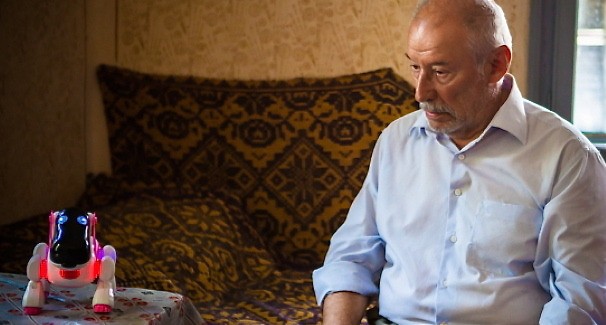
VICTOR ROBENGIUC IN THE JAPANESE DOG
Old man after a flood
Tudor Cristian Jurgiu's debut feature is quiet gem, a Romanian film that is contemporary and timeless. It steps aside from the current Romanian school, whose films are often grim, ironic an gray, with a portrait that's humanistic and literally and figuratively in delicate color. The focus is on the elderly Costache Moldu , who lives in a village, and his reunion with his estranged so, an engineer, who has been living and working in Japan and brings a Japanese wife and young son. With wonderful observational patience Jurgiu thoroughly establishes Costache's milieu before the visitors arrive. The Japanese Dog is all about atmosphere, character, and quiet developments among family members. In the context of the new Romanian cinema, it's a quite triumph that may open things up. Use is made of documentary-style neorealism with a precise sound design, but the heart of the film is the acting. As Costache, legendary actor Victor Rebengiuc is a miracle of confidence and restraint, his performance utterly lived-in. You never question it.
Costache has recently lost his wife and house in a flood. He has not told his son this. Though he could call from the mayor's phone in town, he has not been in touch. He has virtually no possessions, but what he has is dignity and patience. The camera follows him around his daily rounds, getting necessities, greeting neighbors. Panhandlers who come to him show that though stripped, he is not poorest of the poor. In fact he owns some hectares of land he's offered 6,000 euros for. He refuses to sell for now: "What would I do with all that money?" Later he reveals he wishes his son would come back and use it.
As the film begins, a lovely long shot shows many people gathering detritus from marshland left by the flood. Next in the morning we follow Costache as he hauls the detritus of his ruined house in a cart to the other house (sans water and electricity) that he's been allocated by the town. A few gestures establish that he is firm, but generous,and without self-pity. When his son Ticu (Serban Pavlu) arrives from Japan with his wife Hiroko (Kana Hashimoto) and son Koji (Toma Hashimoto), he welcomes them quietly, taking particular interest right away in Koji. Perhaps it's his natural joy at having a grandson; but he may also prefer not to get into discussions with Ticu. Turns out there is rancor over Ticu's bowing out of marrying local girl Gabi (Ioana Abur) and skipping off to Japan, which seems to have touched off the estrangement. In a drunken night this is hashed out, but this is a sequence the film largely elides. What's clear is that Ticu's return has changed things.
The beauty of this film, which has been likened to Ozu, is its gentle understatement, the way it speaks through milieu and gesture, without elaborate speeches. Ticu, Hiroko, and Koji return to Japan, where Ticu wants Costache to come and live with them. As they leave Koji gives his grandad an English-speaking robot dog, the canine of the title, to "take care of" him. At the end, grandad and son and grandson have been in friendly communication on the mayor's phone and Costache has sold his land and he leaves with a suitcase, evidently for Japan. To live there? We don't know, Nor do we know all the details of feelings and events but we walk out with a sense of knowing much.
[]]The Japanese Dog/Câinele Japonez[/i], 86 min. (listed on IMDb as Câinele Japonez), debuted in San Sebastián Film Festival — New Directors; also at Santa Barbara and Warsaw (Competition 1-2 Award at the latter). Screened for this review as part of the FSLC-MoMA 2014 New Directors/New Films series, March 2014. Showing Friday, March 21, 6:30pm – FSLC and Sunday, March 23, 1:00pm – MoMA.
Last edited by Chris Knipp; 01-01-2015 at 05:00 PM.
-
QUOD ERAT DEMONSTRANDUM (Andrei Gruzsniczki 2013)--ND/NF
ANDREI GRUZSNICZKI: QUOD ERAT DEMONSTRANDUM 2013)--ND/NF
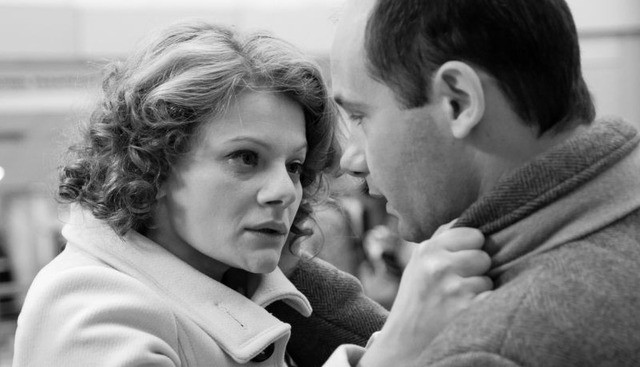
OFELINA POPII AND SORIN LEOVEANU IN QUOD EST DEMONSTRANDUM
The personal and the intellectual in communist Romania
Andrei Gruzsniczki's Romanian film, Quod Erat Demonstrandum, concerns the depredations of life in the Eastern Bloc during the Cold War, specifically in the mid-Eighties, when the Berlin Wall was not down yet but citizens were straining at the bit to be released from the iron control of Russia and the Communist Party. There have been plenty of films about this topic before. It would be hard to make anything richer, more atmospheric, or more fascinatingly plotted than Florian Henckel von Donnersmarck's The Lives of Others. But this new film's existence has plenty of justification. It has its own particular story to tell. It has its vivid lead character, a brilliant mathematician held back because he isn't a loyal communist or eager informer. And shot on film in beautiful black and white, it captures the looks and manners of its time and place with unusual precision.
Quod Est Demonstrandum has its own story to tell, but what underlies that story is how the communist system of repression, intimidation, informing and bribing weaves its way into relationships and stifles intellectual progress. In the foreground at first is the problem faced by Sorin Parvu (Sorin Leoveanu), the most talented mathematician of his Romanian generation, whose associates called him "Einstein." He has plans for wave motion research that plainly can lead to a whole panoply of important practical applications. But earlier in his career he was blocked from going far in work with Fourier analysis because he couldn't get hold of the books. He is in his 40's and still hasn't finished his Ph.D. Lucian (Dorian Boguta), a lesser colleague who tows the ideological line and begins helping state security to spy on Sorin, gets the trips abroad Sorin has been denied and lives in a posh apartment and has the books.
As Parvu, Sorin Leoveanu makes an interesting protagonist. He's balding, not conventionally handsome. He lives with his mother. But he has a keenness, energy, and mystery about him. He is involved with Ducru, a mathematician friend who has escaped to France, and Sorin sees a lot of Ducru's' wife Elena Buciuman (Ofelia Popii), who works with computers, and her son David (Marc Titieni). Sorin's relationship with Elena is a little ambiguous; she's obviously more of a friend of a friend to him -- something else that may be used against him, along with his too great independence as a thinker and dodging of rules.
Alecu Voican (Florin Piersic Jr.), an overeager and frustrated agent of Securitate (the Romanian spy network) is put on Sorin's case when it's learned that he's published a paper in the US -- without getting prior approval. Even though the theorem in it has no practical or strategic application, a big fuss is made over this breach by the authorities. Alecu enlists Lucian to look into Sorin. Then he decides to get at Sorin through Elena. Alecu's ploy is to pose as an officer of the passport office specially assigned to Elena's case. Securitate is very exercised over Ducru's de facto defection to France. Alecu makes it look hard for Elena to get to France to rejoin her husband -- hard enough so she may become willing to betray her friend Sorin. Things don't, however, turn out as expected.
Several memorable scenes are the one of cars in line being pushed by hand up to a gas station; lights going out during a bridge game; Alecu having ice cream twice, with two different women; David trying out his French and taking Latin lessons; the hideous patterns of Sorin's mother's dress and armchair. Director Gruzsniczki may seem to meander a bit, but he builds up to excitement in the final minutes in the airport, which are climactic, yet leave things ambiguous. There should be no clear resolution of a situation or a life in a Cold War Eastern Bloc story set in the mid-Eighties, and there is none.
Everything about this film looks and feels authentic, and the way the film stock captures gray shadings digital can't is a pleasure to see. But what's most important is how the viewer gets to feel the way the system makes betrayal of one's values and one's intimates inevitable.
Quod Erat Demonstrandum, 107 mins., debuted at Rome (Nov. 2013), where it won the Jury Prize. Screened for this review as part of the Film Society of Lincoln Center-Museum of Modern Art 2014 New Directors/New Films series where it shows Thursday, March 20, 9:00pm – FSLC; Saturday, March 22, 3:30pm – MoMA.
Last edited by Chris Knipp; 01-01-2015 at 05:01 PM.
-
VANQUISHING OF THE WITCH BABA YAGA (Jessica Orneck 2013)--ND/NF
JESSICA ORNECK: VANQUISHING OF THE WITCH BABA YAGA (2013)--ND/NF
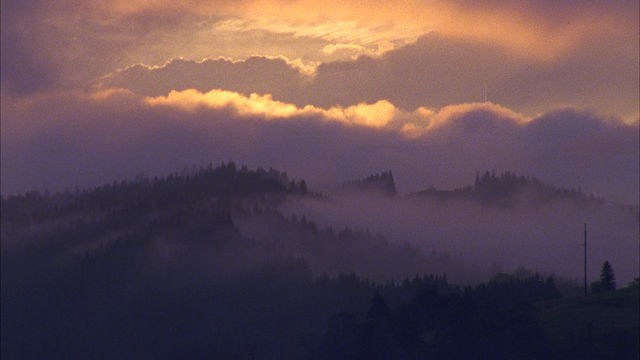
STILL FROM OREK'S THE VANQUISHING OF THE WITCH BABA YAGA
Visual meditation may be in need of further editing
"The Vanquishing of the Witch Baba Yaga is, at times, something of an inscrutable film," writes Daniel Walber of nonfics.com; "Loaded with philosophical voiceover and weighty poetic quotations, scenes of profound silence and a great many enigmatic images, its most immediate impact is one of bewilderment." And Clayton Dillard of The House Next Door on Slant Magazine waxes rhapsodic. "Jessica Oreck's The Vanquishing of the Witch Baba Yaga, Dillard says, "is a staggeringly polymorphous documentary that often suggests a collaboration between Carlos Reygadas, Godfrey Reggio, and Apichatpong Weerasethakul. Part meditative nature film, part urban observational, part fairy tale, these seemingly disparate parts consistently juxtapose throughout to form not just an evocative mood piece, but a larger, discursive work that achieves something resembling Sergei Eisenstein's concept of dialectical montage. . . To call Oreck's film 'hypnotic' would be too easy, as it would neglect the content of her ravishing images, which cohere into a rather precise essay film."
Well, I'm sorry to report that personally I could not perceive the "precise essay film" Dillard promises. I might also suggest that any collaboration between Carlos Reygadas, Godfrey Reggio, and Apichatpong Weerasethakul would be likely to produce a shapeless mess -- which each of those artists have risked producing occasionally on their own: together there would be a work of no discernible style. And this is what happens in Oreck's film. There are gorgeous woodland scenes and glowing landscape skies. Then there are roaming panoramas as a camera rushes by roadways in the periphery of a city or past blocks of flats downtown. Then again there are shots of conventional Eastern Bloc art illustrations for a "Witch Baba Yaga" children's tale (a kind of nastier Slavic version of Hansel and Gretel) while it is read in voiceover by an older woman in -- what language? Polish, Ukrainian, Russian?: these segments are strewn through the film, interrupted by the philosophical musings, whose import seems to be, life is mysterious and the woods are lovely, dark, and deep. There is too much going on here, and it all adds up to rather little. Part of the problem is that the image quality -- lensing, color correction, the eye itself in the cinematography by Sean Price Williams -- is not up the the best technical standards of Reygadas, Reggio, or Weerasethakul. Some further editing and post-production may be needed to bring this film up to the concept it aspires to. The illustrations for the Baba Yaga story are disappointingly conventional stuff, quite unimaginative.
An underlying thesis stated at the outset is that modern civilization is opposed to wilderness, but we "have" our own wilderness inside us, and any attempts to repress it will only cause it to burst out. This is the kind of experimental, open-ended film that some will find inspiring. Others will just see it as a long slog. Look up Walber's and Dillard's comments for more favorable angles on the film. But I warn you: they speak in very vague and general terms.
The Vanquishing of the Witch Baba Yaga, 73 mins., was shown in early March 2014 at the True/False documentary festival in Columbia, Missouri (where the Walber and Dillard saw it). It debuts at the New York Film Society of Lincoln Center-Museum of Modern Art joint New Directors/New Films series, where it was screened for this review. Showing Saturday, March 22, 1:30pm – FSLC; Monday, March 24, 6:15pm – MoMA.
Last edited by Chris Knipp; 01-01-2015 at 05:04 PM.
-
TO KILL A MAN (Alejandro Fernández Almendras 2014)--ND/NF
ALEJANDRO FERNÁNDEZ ALMENDRAS: TO KILL A MAN (2014)--ND/NF
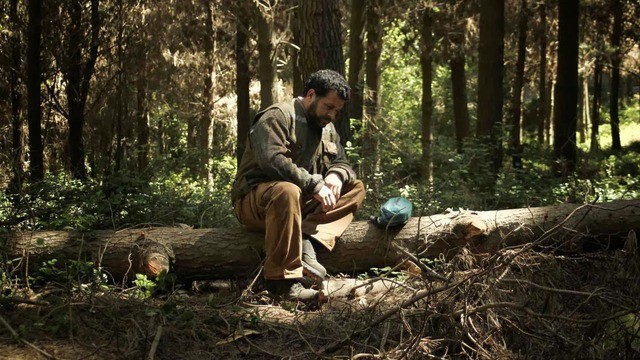
DANIEL CANDIA IN TO KILL A MAN
Points of no return
To Kill a Man-- the title gives away the climax -- is a slow-burning, cooly observational neorealist Latin American revenge story whose beleaguered, emasculated pater familias winds up murdering a brutal ghetto tormenter who claims just to be a "prankster." Guy Lodge of Variety suggested this film has links to Pablo Laraín's films (Almendras like Larraín being Chilean) -- presumably their creepiness and moral ambiguity, but Almendras' method is more meandering and dogged, with a bare-bones mise-en-scene and a straight-on middle distance camera that makes every facade and interior look equally drab and khaki. A story that might be mind-bending and suspenseful if told by Patricia Highsmith winds up being numbing and sickening. But no doubt amateur killers often do such things in these kinds of agonizing dragged out clumsy ways. And no doubt though the storytelling here is unsatisfying and opaque, that's the way, in the interests of realism, Almendras means it to be. What the film is good at showing is how people become trapped in their actions. And a trap is, well, something you can't get out of no matter what you do.
Jorge (Daniel Candia) is a tranquil, middle-class family man who's a diabetic with a shrewish wife, a son, and a daughter, who live near the projects. He works as a maintenance man at a distant research project and comes home tired every night on the train. Some of the local toughs menace him one such evening as he returns with groceries ordered by his wife, and rummage through his pockets and steal his insulin needle. From then on war begins. His son Jorgito (Ariel Mateluna) goes over to retaliate and is shot by the leader of the ghetto men (the only one who stays in the picture), who shoots himself to make it look like he fired in self defense. Jorge's wife Marta (Alexandra Yanez) blames him for all this: Jorge's manhood is challenged from all sides. The tough, known as Kalule (Daniel Antivilo) goes to jail for a year and a half, and then when out again, steps up his intimidation. By this time Jorge and Marta are no longer together, though they remain in contact. Finally when Kalule assaults and sexually menaces Jorge's daughter despite a restraining order -- after much bureaucratic stalling by police -- has been issued against him, Jorge gets serous.
He has a rifle at work to defend the property he maintains; we see he will use it when a camper refuses to remove his fire. He takes the rifle to the projects and lures Kalule out by setting off the alarm on his car, then forces him into the refrigerator truck his son operates. Kalule begs to be let out, shouting a mixture of pleading and curses that gradually turns to vicious threats. Heedless, Jorge drives the truck far out of town. After he has done away with Kalule, after teasing and tormenting him a bit, it is we, the audience who are teased and tormented, perhaps, as Jorge seems unclear about what to do with the body. Eventually, it appears that guilt overcomes him, and he is already a suspect and has been visited by police at work. Despite Almendras' relentlessly undramatic method, the post-murder atmosphere created by following a killer as events gang up on him still has some of the classic edge. But Jorge is a blank protagonist whom one may despise as well as pity and cannot ultimately sympathize with -- or even have much of a sense of. The music, heavy on the loud, eerie woodwinds, helps awaken a thriller vibe -- but seem to go agains the low -keyed style of everything else.
To Kill a Man/Matar a un hombre, 82 mins., debuted at Sundance Jan. 2014, also showing at Rotterdam. Screened for this review as part of the FSLC-MoMA series, New Directors/New Films, March 2014. A Film Movement release. ND/NF showings: Thursday, March 20, 6:30pm – FSLC; Sunday, March 23, 3:30pm – MoMA.
Last edited by Chris Knipp; 01-01-2015 at 05:06 PM.
-
A SPELL TO WARD OFF THE DARKNESS ( Ben Rivers and Ben Russell 2013)--ND/NF
BEN RIVERS AND BEN RUSSELL: A SPELL TO WARD OFF THE DARKNESS (2013)--ND/NF
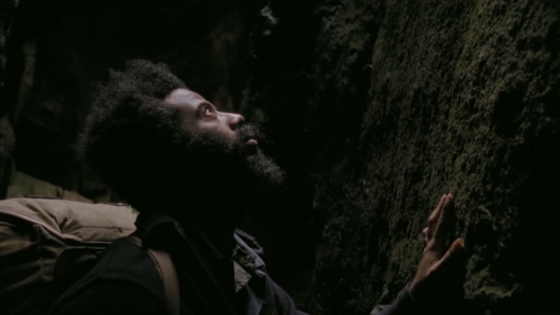
ROBERT A. A. LOWE IN A SPELL TO WARD OFF THE DARKNESS
This may bring on the darkness as much as ward it off
Ben Rivers and Ben Russell are experimental art film makers. Rivers is from the UK, Russell from the US; this is their first collaboration, though they previously toured together, in a program combining their short 16mm. films. This film is conceived and presented as a full-length feature in three parts. The first is shot of a small collective community on an island off the coast of Estonia. The second is in Finland, where there is a sauna. The third is in Norway, where a howling heavy-metal style concert is performed in heavy makeup in a small club. There are some pure landscape sequences, one of the musician Robert A A. Lowe in a boat and camping, and earlier one of a woodland lake at night, accompanied by an original A cappella performance, which is quite lovely. Making sense of this film, which is really three short films tacked together (except for the carryover of Lowe) is not aided by the failure to identify the locations or sections during the film. This Spell can only be enjoyed with those who see cinematic experience as non-narrative going with the flow.
How all these three segments fit together thematically is anybody's guess, but in some ways they all flow together as part of the same world. Oddly, the communitarians on the island sound an awful lot like American hippies, circa 1968; and since the people in the Finnish woods running in and out of the sauna speak English, they might be from the same group. The final concert might take place in Seattle, if Metallica was a grunge group and went in for imitating the sound of wild animals in heat. A KimStim release.
A Spell to Ward off the Darkness, 98 mins., debuted at Locarno, Aug. 2013. Screened for this review as part of the FSLC-MoMA New Directors/New Films series, March 2014, where it shows Saturday, March 22, 9:00pm – MoMA;Tuesday, March 25, 6:30pm – FSLC.
Reviewed for Hollywood Reporter by Boyd van Hoeij.

Last edited by Chris Knipp; 01-01-2015 at 05:13 PM.
-
STOP THE POUNDING HEART (Roberto Minervini 2013)--ND/NF
ROBERTO MINERVINI: STOP THE POUNDING HEART (2013)--ND/NF
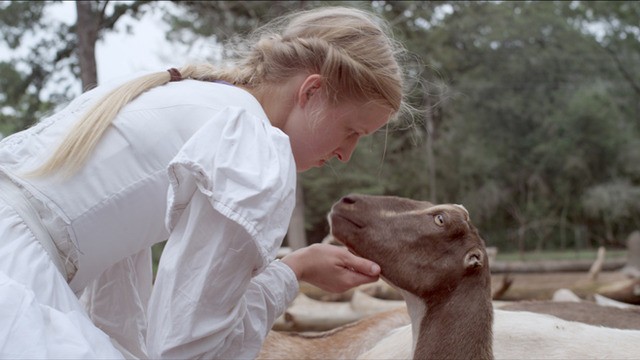
SARA CARLSON IN STOP THE POUNDING HEART
Docudrama -- or propaganda?
If Roberto Minervini's Stop the Pounding Heart, last in a Texas trilogy the US-based Italian has been making, were a documentary, as it at first appears to be, it would be very remarkable indeed since it has access to some intimate moments. But eventually we realize this film is "staged" by "people playing themselves." And that's a lot different from either documentary or drama, and, since the Carlson family are the main focus and their Christian piety is held up to the light, this starts to seem like a "Christian film," and therefore a kind of propaganda. The film is supplied with simplified English subtitles, presumably for an international Christian audience -- though director Minervini himself, a graduate of the New School in NYC, is a Buddhist.
The family chiefly depicted in the film is certainly a remarkable one, living simply and productively off the land and providing many children with the upbringing they want them to have. Except for a couple of harsh words from the father, the Carlsons put their best foot forward, and many details are missing. (The Carlsons and some others appeared in the two other films.) What's stressed is the austere life of the huge Carlson family (two parents, 12 children, by reports) -- get up, feed the goats -- they run an artisinal farm that sells goat milk, cheese, and yogurt at farmers' markets -- then Bible-study, breakfast, work.
The alternate theme is of blond 14-year-old Sara Carlson's occasional meetings with Colby Trichell, an amateur bull rider about her age from another large (though not quite so large) Christian family in the same community. Though darkly handsome and slightly rakish (too reedy yet to be a successful rider himself), Colby is polite and restrained and this "courtship" is so subtle as to be almost imperceptible. In the Carlsons' version of Christian ethics as explained by Sara's mother, dating is frowned upon, since it only shows a mate who is available for "fun." What about the un-fun times? Performance during those is what counts in a mate, Sare's mom says.
But how then is a mate chosen? This is not explained. Nothing is explained. At the end, after Sara's mother has soothed her girl who's going through a time of worry and fear she does not explain (stopping, presumably, the pounding of her heart), Sara is dressed in a tight girdle and what looks like a 19th-century-style wedding dress and goes out. Is she going to marry Colby? At the age of 14? Or is this old-fashioned dressup just to reinforce the girls' allegiance to traditional women's roles, since their mother has coached them on the great values of being submissive and putting the men in their life first?
Sara's mother's counseling of the girls is wonderful, but rather generic, as is Sara's counseling of some younger daughters. As one of the oldest children, she does part of the home schooling.
But the home schooling we see is only vague Bible lessons, no other teaching.
The cinematography of Stop the Pounding Heart by Diego Romero Suarez-Llanos is handsome, and blond heads are often attractively back lit, with cute baby goats coming up to nuzzle Sara Carlson's hand. She knows their names and calls them "sweetie." The film shows a number of bull-riding sessions, involving young boys, including Colby. Colby gives lessons to Carlson boys and encourages them to try real bull-riding. The actual full-sized bulls seem terrifying and dangerous, and Colby gets hand and arm injuries. At times it seems that the film is more interested in the bull riding than in the Christian lessons, perhaps because they are livelier to film than hand-milking goats. Another bit of excitement comes from target practice with guns in the back yard in which the Carlson girls participate.
The film includes a childbirth at which Sara observes in a doorway. The mother is on the floor, Sara's mother attending, a midwife, and the mother's husband helping out. Sara seems a bit uneasy.
And we are uneasy after watching this attractive, so natural-seeming film, which seems to advertise a pure Christian way of life that it does not delve into deeply enough for anyone but the converted to be satisfied with. Admiration for this film when it showed out of competition at Cannes seems to show that you can get away with a lot nowadays with festival critics if you use documentary elements attractively.
Stop the Pounding Heart, 100 mins., was screened for this review as part of the FSLC-MoMA 2014 New Directors/New Films series showing Friday, March 21, 6:15pm at MoMA and Sunday, March 23, 3:30pm at the Film Society of Lincoln Center.
Last edited by Chris Knipp; 01-01-2015 at 05:14 PM.
-
BUZZARD (Joel Potrykus 2014)--ND/NF
JOEL POTRYKUS: BUZZARD (2014)--ND/NF
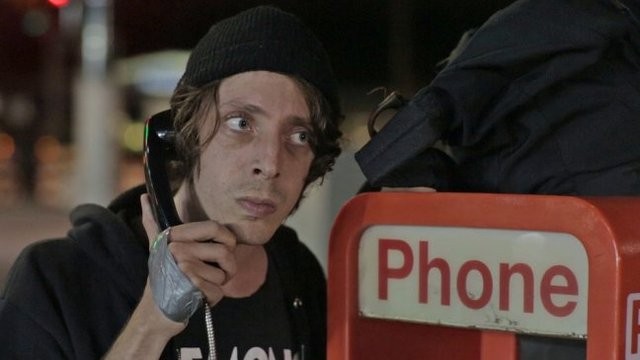
JOSHUA BURGE IN BUZZARD
Slacker crook in the Midwest
Joel Potrykus's 2012 Ape (Best New Director Award at Locarno), set in the filmmaker's home ground of Grand Rapids, presented a pyromaniac and failing standup comic whose greatest pleasure is in burning his worst jokes. The Voice called Ape "an unnerving hybrid of Harmony Korine's Gummo and Frank Whaley's overlooked The Jimmy Show." Joshua Burge, who has been Potrykus' chief collaborator in all his films short and long, stars in Buzzard as Marty Jackitansky, an office temp scam artist. For half of Buzzrd, set in Grand Rapids again, Marty focuses on redeeming stuff he hasn't bought and cashing third party checks cut at the bank where he's working. Most of the time he hangs out with, though he has his usual contempt for, coworker Derek (Potrykus himself). But fear that his check gambit has got him in trouble at the bank makes Marty flee to Detroit, where he at first celebrates by overnighting at a nice hotel and gobbling "a $20 plate of spaghetti" from room service, then switches to a ghetto dive and sinks into more sinister and illegal behavior, using a homemade "Power Glove" as a weapon and barely eluding homelessness.
Seeing Marty rapidly put away an entire heaping plate of spaghetti and meatballs in real time exemplifies the Burge-Potrykus team's ability to go the whole way in scene after scene. Clearly Potrykus and Burge work well together, and all the secondary characters -- store, bank, and motel clerks mostly -- do good work. At times the film seems like a series of schticks, but as Marty Jackitansky Burge is a character who never runs out of gas or backs down, even when the cops are coming. The madcap dark humor Potrykus and Burge weave is fresh and engaging as well as slightly macabre.
Buzzard, 97 min., was picked up by the new punk distributor Oscilloscope at the SXSW festival. Screened for this review as part of the 2014 Film Society of Lincoln Center-Museum of Modern Art series, showing alsong with an 18-mins. short, Dustin Guy Defa's Person to Person. ND/NF showtimes: Sunday, March 23, 6:15pm – FSLC and Monday, March 24, 8:30pm – MoMA.
Buzzard got limited US theatrical release 6 March 2015. See review by Armond Wite for National Review.
Last edited by Chris Knipp; 03-27-2015 at 10:09 AM.
-
THE DOUBLE (Richard Ayoade 2013)--ND/NF
RICHARD AYOADE: THE DOUBLE (2013)--ND/NF
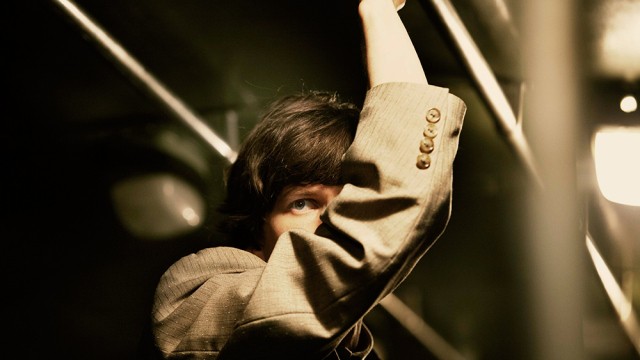
JESSE EISENBERG IN THE DOUBLE
Shoved aside by one's doppelganger
Richard Ayoade, already popular in the UK for his "The IT Crowd" TV participation, made a great impression with his distinctive debut feature, the charming period coming of age flick Submarine. His new one, which a colleague warned me was "a mind fuck," is a pleasure too, as handsomely produced as Submarine but darker. (It may be a disadvantage that the field is crowded with cinematic doubles, with the more soulful and handsome Jake Gyllenhaal duplicated in the starring role of Denis Villeneuve's Enemy and Annette Benning in a double movie currently showing, The Face of Love.) Based on Dostoevsky's novella, coadapted with Harmony Korine's brother Avi, Ayaode's The Double, which stars Jesse Eisenberg, is, by its maker's admission, much indebted for its mood and style to Terry Gilliam's Brazil and Orson Welles' version of Kafka's The Trial. The director would have badly failed in his aim if this film could be described as remotely charming, but there are moments when one would like to take up the protagonist, Simon James, as played by Eisenberg, and soothe and pet him.
Simon is a faceless corporate drone, whose lazier but more aggressive duplicate is first spookily glimpsed by Simon in the subway. Looking and dressing exactly the same, Simon's alter ego arrives at the company and is at once hailed by everybody as the bright young thing, especially by company manager Mr. Papadopoulos (Wallace Shawn). (Up above everything in this Orwellian world styled via Gilliam is The Colonel, a barely glimpsed James Fox, lending an aura of legend. Ayoade knows how to use casting resonantly, and gives a number of his Submarine actors memorable walk-ons.)
The wilier, more politick version of Simon James is James Simon. To simplify matters we'll call the wimpy self Simon and the new more testosterone-rich one James, as in Franco. But when James and Simon began flitting back and forth in the same frame one grasps the relevance of the term "mind fuck." When the self and its doppelganger get in touch and start helping each other and taking each other's appointments, like deceitful twins, even though Eisenberg does play James with a confident glow and Simon with a pitiful falter, it remains confusing.
What's certainly clear without a diagram is that James quickly overshadows Simon and makes him virtually disappear, stealing his girl, or the girl he dreams of making his, Hannah (Mia Wasikowska), and snitching his arcane research for the company, which Mr. Papadopoulos ignored but now greets, coming from James, as brilliant. While Simon has never been recognized by anybody even after seven years at the company, and constantly gets his ID vetted, James is instantly persona grata.
The first half hour of The Double is its best of times, when the well-oiled physical business, delivered thorough finely honed mise-en-scene and precise editing, elucidates Simon's manifold frustrations -- every transaction is interrupted, every door shuts automatically in his face -- so neatly that each failure almost seems like a triumph for its hapless victim, who becomes the star of an intricate dance. Every gesture, every interruption, shows what Simon is up against, even before James arrives to complicate his life.
That complication also opens up an awareness of new possibilities for Simon. If somebody who looks just like him can be confident and successful and attractive to the ladies, well, why can't he? This message is a trite one hidden behind all the visual and narrative ingenuity. But that has to compete with the more doctrinaire maxim that corporate life crushes the ego -- or, in the more Dostoevskian extreme, drives one mad. What are these truisms, though, but a rack on which to hang Ayoade's playful exercises in style and character?
The Double is certainly not an example of sophomore slump. It's far too brilliantly produced, well acted, and handsome to look at for that. Every minor character is a pleasure to watch, amped up almost to Kubrickian levels. But one misses the warmth and charm of Submarine, which was also I guess funnier and more fun. Ayoade has absorbed his new stylistic influences almost too well; he needs to get his own groove back. And with this degree of accomplishment and skill, he likely will.
The Double, 93 mins., which is a Magnolia PIctures release, debuted at Toronto in fall 2013, followed by London and Glasgow. It was screened for this review as part of the Film Society of Lincoln Center-Museum of Modern Art series New Directors/New Films, with showings Monday, March 24, 9:00pm (Lincoln Center) and Saturday, March 29, 6:30pm (MoMA). It has theatrical openings coming in the UK 4 April 2014, then the US 9 May and France 11 June.
Last edited by Chris Knipp; 01-01-2015 at 05:21 PM.
-
THE RETURN TO HOMS (Talal Derki 2013)--ND/NF
TALAL DERKI: THE RETURN TO HOMS (2013)--ND/NF
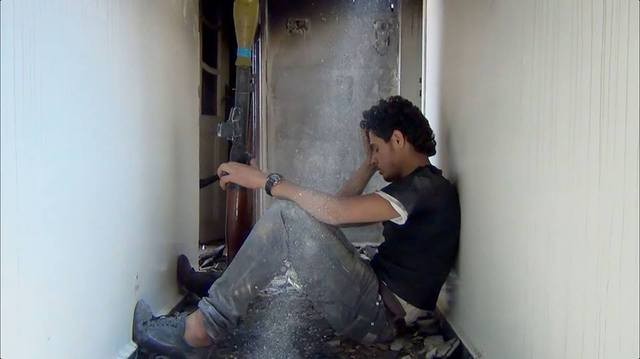
ABDEL-BASSET AL-SAROUT DURING A PERIOD OF EXHAUSTION IN RETURN TO HOMS
Rebel war in Syria up close
Talal Derki's Return to Homs is the most visceral and personal documentary about urban siege warfare one is likely to see, the narrative of the ravaged yet still defended city of Homs and one of its natives, a fiery young rebel leader. Neatly editing rough immediate footage in bombed-out buildings and rubble-filled streets, Derki, voicing-over in elegiac, composed classical Arabic, pulls together an otherwise very rugged and vernacular narrative of 2011 to 2013 from the point of view of young rebels engaged in a struggle to hold onto the city of Homs that was considered the capital of the anti-Assad revolution -- and hence was besieged by government forces till its apartment buildings and streets are nothing but concrete Swiss cheese with a scattering of cemeteries and mosques where the rebel martyrs are celebrated.
Derki follows two young Syrians. The main one is Abdel-Basset al-Sarout, a 19-year-old soccer goalie ranked second in the country. Handsome, charismatic and with a spark in his eyes, he could be an Arab Errol Flynn with a touch of James Franco. Basset, a blacksmith, emerges as a firebrand leader during early peaceful demonstrations. He becomes both a creator of rebel songs and, later, when convinced the revolution must fight back with arms, a street fighting leader. As a contrast to Basset, there is one of his close friends who sticks with him, Osama al-Homsi, a quiet 24-year-old university student-turned-media activist. Later Osama, who has been wounded but recovered, has been picked up at a checkpoint, his friends learn, and not heard from again.
Most of Basset's other closest friends get killed. Often they are trapped in one of two Homs neighborhoods, digging tunnels, firing from disintegrating buildings, and for a time forced out of the city altogether. Basset is wounded twice, in the leg and foot, and goes through several periods of exhaustion and near despair and starvation that show on a face that after two years has visibly aged. But when Derki returns after several absences of a month or so, the wounded, limping Basset is back on his feet again. We see him often invent chants and songs and inspire men, smiling his charming smile. At one point we see him losing the will ("I can't do this anymore"). We see him after being wounded, half-raving and praying for the Bashar al-Assad regime to be defeated and for himself to die a martyr's death. Then he is back again, as if risen from the ashes and rubble.
Half of the merit of this film is the way it is able to stick to the continually failing, but never abandoned, efforts by rebels to defend the city of Homs. The other is its tenacious ability to give the narrative an appealing face by following Basset for this three-year period -- even when it's very dangerous where he is, so dangerous rebels are getting killed and wounded right in front of the camera. The action is so intense there's no time to be scared. Xian Brooks is right in his Guardian Sundance review. It would have been nice to get more of a look at the few non-rebel survivors, women and old men, who are still in the city, as well as "a little more structure, context and analysis," but "The director's relentless, claustrophobic approach is surely an accurate reflection of the tragedy itself. There is no wider picture; the world has largely turned its back." Return to Homs is what it is, and what it is is remarkable enough: a vivid snapshot, a poetic memoir, an impassioned plea -- a concentrated essence of all the hope, passion, and despair of the Arab Spring.
We follow Basset, we are at his side, and we feel his revolutionary charisma with his followers. But it's also clear -- Derki's voiceover says so, that this Homs rebel defense lacks coordination at some key moments. Brave and defiant though they are, their numbers and equipment are too limited to win. Yet while Basset expects to die more than once, as the narrative ends he is still alive and fighting.
Highly recommended, but only for the stout of heart: there are painful and disturbing images.
The Return to Homs/العودة إلى حمص [Al-3awdah ila Homs], 90 mins, exclusively in classical and colloquial Arabic with English subtitles, debuted at the Amsterdam documentary festival (IDFA) and won the world cinema jury documentary prize at Sundance January 2014. Screened for this review as part of the Film Society of Lincoln Center-Museum of Modern Art series New Directors/New Films, showing Tuesday, March 25, 6:15pm at MoMA and Wednesday, March 26, 9:00pm at Lincoln Center.
Last edited by Chris Knipp; 01-01-2015 at 05:23 PM.
-
THE STRANGE LITTLE CAT (Ramon Zürcher 2013)--ND/NF
RAMON ZÜRCHER: THE STRANGE LITTLE CAT/DAS MERKWÜRDIGE KÄTZCHEN (2013)--ND/NF
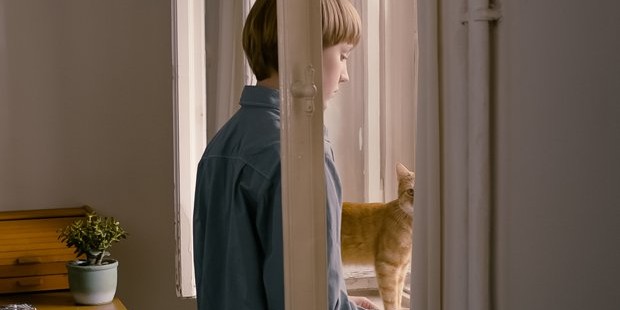
Leon Alan Beiersdorf and the cat in The Strange Little Cat
Kitchen life: choreographed poetry and zaniness of the quotidian
The quiet magic and lurking humor of the quotidian are subtly dramatized in this seamless film about several generations of a good looking family puttering around the kitchen of a Berlin apartment. Two dozen people and creatures come and go, including a black dog, an orange cat, and a moth (which keeps coming back). A rat is also mentioned. Comparisons with Jacques Tati, Michel Gondry, and François Ozon have been made. Zürcher is only 30; the film is only 72 minutes long. Accomplished filmmaking, though conventional expectations are frustrated and the hilarity of Tati is certainly missing. My memory is the sort of obligato of the presiding figure of the kitchen and the film, the unnamed mother played by Jenny Schily, whose Sphinxlike face reminded me of Charlotte Rampling's. For those who can't tune in -- and small English subtitles that vanish in a millisecond may undermine those efforts -- this may seem much ado about nothing. But the originality of the conception and the precision of the execution are unmistakable and critics at the Berlinale ranked this film high.
First a cat loudly whines to be let in, and then that seamlessly morphs into the voice of the youngest child, Clara (Mia Kasalo), who likes to screech at kitchen appliances. Zürcher works with what there is, so there are electric blackouts, a noisy espresso machine, a bottle that magically spins in a pan, and a washing machine, briefly menacing, repaired by a handsome neighbor with whom Schilly's character has a wordless sexual chemistry. There is a shopping list whose orthography is much discussed as a recurring family record of childhood, and people come and go. Zürcher's art is in the smooth choreography of the many people moving around and dodging each other (or kissing later when another group visits for the long-prepared-for dinner that evening), constantly talking, sometimes seen from below, constantly in action, as if naturally, yet with a perfection, a geometrical rhythm, that suggests preparatory diagrams and many rehearsals -- but the effort never shows.
There are recurrent motifs: the moth reappearing, the ginger cat slinking in and out, the dog coming and going, arguments over buttons and shirts, "grandmother's sleeping!" said to quiet noisy children. Cheery music by San Francisco rock trio Thee More Shallows ("a shiny chamber-orchestra affair in sub-Michael Nyman vein" explains Stephen Dalton in Hollywood Reporter) helps keep things light and smooth.
Zürcher is interested in interrelationships and overlappings, both familial and physical. Sometimes people briefly recall a recent incident, which bears this out. For instance Schilly's character recalls going to a movie with grandmother, when a man who sat beside her put his right foot over her left one. She didn't know that it was intentional: maybe he was just too engrossed in the movie to notice he'd done it. When she didn't pull her foot out right away, she was stuck and had to leave it there, as grandmother fell asleep and breathed heavily, making her fear she'd snore. Finally grandmother woke up with a start and she could retract her foot. Zürch sees his scene and perhaps life as a kind of "Twittering Machine" like a Rube Goldberg gadget only less eccentric. He has been for some time and still is a student at the DFFB Berlin film school, and made this film reportedly as a result of a seminar with Béla Tarr, whom he thanks in the credits.
Zürcher was "The first-timer with perhaps the most distinctive sensibility" at Berlin this year, wrote Dennis Lim in the NY Times. His unmistakable talents may show to even better effect in future if he relaxes a little and lets things get simpler, but it seems essential to his effect to give equal weight to everything, people, animals, and objects, "such that nobody and nothing is sidelined," as Charles H. Meyer writes for Cinspect.
Das Merkwürdige Kätzchen, 72 mins., in German, debuted at Berlin. The Swiss-born filmmaker, now resident in Berlin, has made videos. This is his first feature. Originally screened for this review as part of the 2013 San Francisco International Film Festival (25 Apr.-9 May 2013), since the Berlinale this film has been shown in an exceptional number of festivals, at least three dozen, including Cannes and Toronto. This review is republished here as part of coverage of another special event in which the film is included, the Film Society of Lincoln Center-Museum of Modern Art series New Directors/New Films, where it is showing Tue. 25 Mar. 2014 at 9:00pm at MoMA and Wed. 26 Mar. at 6:30pm at Lincoln Center.
Last edited by Chris Knipp; 01-01-2015 at 05:25 PM.
-
YOUTH (Tom Shoval 2013)--ND/NF
TOM SHOVAL: YOUTH (2013)--ND/NF
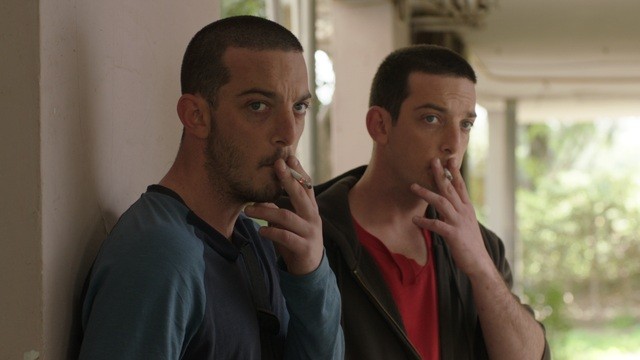
DAVID AND EITAN CUNIO IN YOUTH
Good Israeli family boys turn into criminals
Israeli writer-director Tom Shoval's debut feature Youth brings up hot national issues like economic injustice, alienation, violence, sexism, and diminished expectations, but that wouldn't count for much if he had not crafted an intense, suspenseful story about a crime that is all the more visceral and shockingly physical for being done by a pair of young testosterone-fueled amateurs. What also makes this movie interesting is that it stars two first-timers who are brothers of slightly different age but so similar-looking they seem twins. Their real-life, instinctive blood intimacy is immediately and palpable: they make an explosive and riveting pair. In the story the brothers are Shaul Cooper (Eitan Cunio), the younger, and the older one, Yaki Cooper (David Cunio). Both are in their late teens and still live at home in the family apartment in Petah Tikva, a satellite town of Tel Aviv. But home is crumbling, despite their mother's effort to keep things together. Their father has lost his job, and they're losing their hold on their middle-class life, with ownership of their apartment a matter for immediate concern. But we learn this gradually. What we're watching almost right away is a kidnapping by two tough and determined young amateurs hyped by American action movies and perhaps their own country's casual militarism. Yaki, who's 18, has just joined the army, and is in uniform on leave and in possession of an assault rifle, which never leaves his shoulder and which will power their crime.
In the wordless opening sequence Shaul, still a high-schooler, follows a girl from his school to her apartment house. We think maybe he's a shy admirer, but his manner comes to seem too purposeful to be amorous. The way figures in space are shot by Yaron Scharf (Seven Days, Footnote) throughout Youth is almost sickeningly intense. After Shaul goes back and meets Yaki at home, they prepare their action, moving a mattress into a basement bomb shelter with heavy metal doors they secure with a newly purchased padlock. Shaul also tries out adhesive eye patches he's gotten for blindfolds. We learn he works ushering at a cinema showing American blockbusters, a feeble effort to augment family income like the envelope-stuffing he does with his mother (Shirli Deshe). The shadow is their depressed, anxious father Moti (Moshe Ivgy), who has gone back to smoking. Cigarettes become an apt symbol of panic in the movie.
The cruder the kidnapping the more shocking and real it is to watch. What's jaw-dropping first off is that the brothers grab Dafna Edelman (Gita Amely), the rich girl Shaul was following, in plain daylight, pull her over to behind a wall, tie and blindfold her, with masks quickly on and off, and man-handle her onto a bus. Sunglasses hide that she's blindfolded. Yaki's rifle is poked into her leg, but he's in army uniform: he's sacrosanct. Still somebody gets suspicious so they jump off and walk most of the way -- to their own apartment building. A lot of the time, though not on the bus, Dafna protests loudly. When she's tied in the basement she continues to do so.
All images of the girl's imprisonment are intense and real. And events that unfold are deeply ironic. Yaki shoots images with Dafna's cell phone of her tied up on the mattress and them poised over her with the rifle and in masks to dramatize their act and her situation, and sends the best shot to her parents with a text message demanding $152,000 for her release. But, big problem: nobody answers. Turns out not only are Dafna's parents so orthodox they strictly avoid picking up a phone on the Sabboth but they're used to the rebellious girl's making herself scarce on holy days, so won't be worried by her absence. And Yaki must soon return to his basic training.
A further fly in the ointment is that their mother, wanting to put a positive front on things and reenforce family ties, has unexpectedly set up a big holiday dinner for immediate relatives. The central scene is this special dinner Shaul and Yaki, to keep up their part of the front, attend upstairs with the whole family, including granddad who palms over holiday gelt to both brothers. Playing very schizophrenic roles while morphing into sociopaths, they behave politely even with a spoiled little girl at the dinner who makes big trouble for them, then rush down to the basement to see if the tighter wrap they've put on the girl's head hasn't suffocated her. (They manhandle and verbally abuse her, but Yaki is also clearly attracted to her.) Shoval skillfully ramps up ironies, contradictions, and suspense here. The way things play out is as brutal and unexpected as the beginning. Israeli cinema has been producing a string of powerful movies in recent decades and this is another to add to the list. Recommended.
Youth (U.S. Premiere), 107 mins. debuted in the Panorama section of the Berlin film festival in Feb. 2013. It was screened for this review as part of the Film Society of Lincoln Center-Museum of Modern Art joint series New Directors/New Films, where it has its US premiere, showing at Lincoln Center Tues., Mar. 25, 9:15pm and at MoMA Wed., Mar. 26, 6:00pm. US theatrical release begins Friday 21 August 2015.
Last edited by Chris Knipp; 08-18-2015 at 12:10 PM.
-
STORY OF MY DEATH (Albert Serra 2013)--ND/NF
ALBERT SERRA: STORY OF MY DEATH/HISTŇRIA DE LA MEVA MORT (2013)--ND/NF
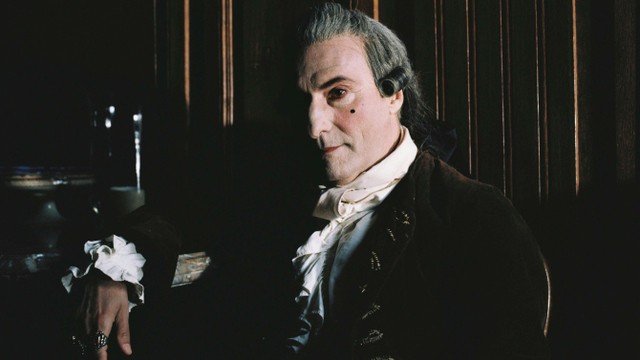
VINCENÇ ALTAIÓ IN STORY OF MY DEATH
Hanging out, then dying
In speaking of an earlier film about (ostensibly) the journey of the Magi, Birdsong (Three Kings), which by some odd chance I happen to have watched at New York's showplace of the cinematically arcane, Anthology Film Archives, former Village Voice critic J. Hoberman commented that Catalan oddball filmmaker Albert Serra had chosen to depict Don Quixote and Sancho Panza (in his previous film) as "little more than the knight and his squire hanging out." Well, that is a key to Serra's new one, awarded a grand prize at Locarno: Story of My Death treats Cassanova the same way, basically just mostly hanging out with his two servants, the main one of whom is a round type who himself could play Sancho.
There are films about history in which actors dress up in the clothes of another century and hang out, and this can sometimes perhaps, in a sort of a way, more effectively make us feel we're experiencing another time than a busy, conventionally plotted historical film. This I think is partly what happens in Rossellini's wonderful The Taking of Power by Louis XIV (1966). Being Louis XIV isn't so much evoked there by Rossellini through his exercise of power as by the way he is served food. He isn't exactly just hanging out. Rossellini does include much specific historical information. However Serra does have a point: just showing Cassanova browsing through some books with his servant or taking a crap may evoke for us -- since he looks and dresses like Cassanova, but is otherwise being so ordinary and normal -- what it was to be Cassanova, better than conventional historical films.
But hanging out can lead to longeurs, and in the French journal Cahiers du Cinéma Jean-Philippe Tessé is by no means expressing a minority opinion when he describes Story of My Death as "two and a half hours of deadly (we insist, deadly) boredom." Hollywood Reporter calls it "dead on arrival." A friend of mine who saw it in the London Film Festival told me watching it made him begin to feel his was experiencing his own death.
In me it induced a trance-like state. My blood pressure seemed to go down. I almost ceased to breathe. Perhaps I was nearly dead myself. At the end of Cassanova's travels, more spoken of than shown, he arrives in the film in the Carpathian mountains, and apparently he runs into Dracula. Note: the name "Cassanova" is mentioned only once toward the end, and that of "Dracula" is mentioned only in the closing credits. When watching the film I thought of him only as "Who is that old man with the pointed head and the beard?"
In the event nice visuals can't be enough, but it should also be noted that Serra has some lovely scenes outdoors in the evening in this film that evoke 17th-century painting, and like everything else here, that go on for quite some time. Why does Cassanova laugh and laugh and laugh while he is relieving himself and at several other times? Perhaps best simply to quote here Neil Young's comment in Hollywood Reporter that in the film we find "the goatish debauchee's jaded decadence offset by a wacky, almost childish sense of humor." Les Inrockuptibles notes (with approval) "There are long scenes of animal sacrifice by firelight, still lives evoking Flemish painting, a play of shadows and this profound black" that constitutes the durable charm and magic, the writer says, of Albert Serra's cinema.
My previous experience of Serra's visual beauties had been distinctly mixed too. His Birdsong consisted largely of distant shots in black and white of small figures moving across a horizon. When seen up close they resembled the Three Stooges. In a his detailed, respectful review J. Hoberman called the black and white "almost gorgeous" (but is it or isn't it? plainly not quite). One must call Story of My Death "almost gorgeous" -- in places. Some use of candlelight and firelight is beautiful, but some night images are just murky. The control Kubrick achieved in Barry Lyndon is missing.
And apart from the salutary effect of just "hanging out" with a famous historical figure, and the occasional visual beauties on view, let's note the flaws Vincent Ostria of L'Humanité (who didn't finish watching) lists: "Lack of historical-geographical relevance. Series of over-composed tableaux without visible continuity; no dramatic progressions. Monopolizing of dialogue by Casanova. Other characters nonexistent." (All of them are played by non-actors, by the way. Vicenç Altaió, playing Cassanova, who delivers his lines in an easy-going ramble matched by others in the cast, is a poet and cultural curator.)
Serra has a right to do what he does, and there are those who love it. But there are other ways to lower your blood pressure. Aerobics, swimming, yoga, running, tennis, sex. Transcendental meditation.
Story of My Death/Histňria de la meva mort , 148 mins., the title inspired by Cassanova's memoir Histoire de ma vie, debuted at Locarno where it received the grand prize, and showed at a dozen other festivals including London and Toronto. It opened in cinemas in France 23 October 2013; French critical response was very mixed (Allociné press rating 3.0 with only 11 reviews). Screened for this review as part of the Film Society of Lincoln Center-Museum of Modern Art joint series New Directors/New Films which is the fim's U.S. premiere, Wed. 26 Mar 2014 9pm at MoMA and Sat. 29 Mar. 5:30pm at Lincoln Center.
Last edited by Chris Knipp; 04-18-2017 at 05:48 PM.
-
FELONY (Matthew Saville 2013)--FCS
MATTHEW SAVILLE: FELONY (2013)--FILM COMMENT SELECTS
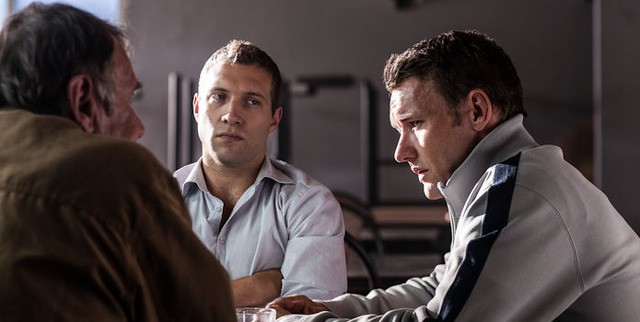
TOM WILKINSON, JAI COURTNEY, AND JOEL EDGERTON IN FELONY
Moral agonies of a compromised Aussie cop
The Australian film Felony begins with a big drug raid where one officer, Malcolm Toohey (Joel Edgerton, who stars and wrote the script) emerges as a bit of a hero, taking a bullet that lodges in his protective vest. There's a bar party of the cops to celebrate their exploit. Mal drives home alone drunk. He dodges an alcohol road test using a police password and his badge. Further on, out of it, he grazes a boy on a bike. The boy falls and hits his head on the road. Mal stops and reports the boy, who lies unconscious, but conceals that it was his car that caused the injury. Other police details that follow, about a pedophile case and more drug arrests, are local color from here on: the main topic becomes the boy, Mal's guilt, and a coverup. Edgerton's screenplay uses familiar trappings to delve into new, thoughtful territory. Mind you, though Edgerton was a player in the awesome Aussie crime movie Animal Kingdom and the same production collective is involved, this is milder, more conventional stuff than that. But its issues and debates are tense and exciting in their way.
Mal faces a terrible choice because he is guilty of a crime but if he confesses to it he'll likely do jail time and lose his career, and he has a wife and little boy. The issues are complicated by the arrival of Detective Carl Summer (Tom Wilkinson, the outstanding cast member here, doing an Aussie accent), an alcoholic on the wagon and a cynic, who immediately posts his new young straight-arrow partner Jim Melic (Jai Courtney) on the periphery so he can talk turkey with Mal. He sizes up the situation (later we learn all was spelled out in more detail than is shown us at first) and urges Mal to stick to his story of being a witness, concocting a car paused at the scene that pulled away when he drew up.
But later Jim proves a fly in the ointment. A single man with no close ties to Mal or Carl, he visits the boy in a coma and meets his mother Ankhila (Sarah Roberts), to whom he feels an attraction. (He violates police ethics himself in trying to get involved with her.) Jim increasingly feels that Mal got off too easy, and wants him thoroughly questioned and a forensic test done on his car. He does not hesitate to face Carl about this issue. This leads to repeated confrontations between Jim and Carl. Meanwhile Mal feeks increasingly tormented by guilt, to the point where he confesses to his wife (Melissa George), who supports him, but also condemns him. Ironically, Ankhila remains grateful to Mal, as well as to Jim.
Carl, whose rage when a judge releases his pedophile on parole leads him to go back to drinking, tells Mal he's just going to feel a little guilt for a while, but the tradeoff will make it worth it. He'll suffer, but he doesn't need to let down the force and his family by going to jail. "Prison is for pricks that don't have their punishment here," he says, pointing to his head. But wait a minute, mate. You've committed a felony. If Carl were considered the voice of the movie, it would seem to be going in a dangerous direction. And things get a bit too complicated toward the end, Edgerton throwing in one too many plot twists. Felony ends with a muddle that's not entirely satisfying. This likely was Edgerton's aim. But while his face expresses a world of pain, he may go a little too easy on his own character and may imply cops have options other mortals don't get. Clearly the director Matthew Saville has worked well with all these actors. This film looks more ordinary than it is
Felony, 105 mins., debuted at Toronto Sept. 2013. It was screened for this review as part of the Film Society of Lincoln Center series Film Comment Selects Monday, Feb. 17, 2013. US theatrical release 17 October 2014.
Last edited by Chris Knipp; 01-01-2015 at 05:28 PM.
-
FISH & CAT (Shahram Mokri 2013)--ND/NF
SHAHRAM MOKRI: FISH & CAT (2013)--ND/NF
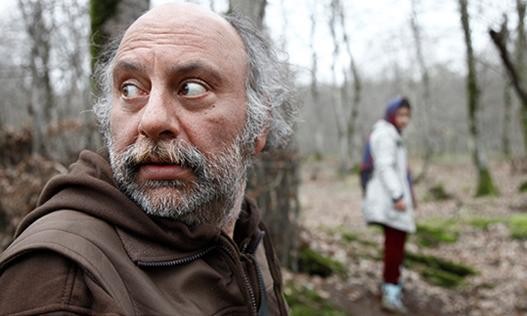
Gray one-take meander by a Caspian lake
In this arcane tour-de-force done in a long single take like Sokurov's Russian Ark (but without the beauty, glamor, history, and art), we begin with cannibals and end up at a little kite "festival" made up of university students camping at a Caspian lake in the grayest, gloomiest time of winter -- good for cinematography based on harmonies of dun with occasional highlights of color. Things start out very creepy and wind up meandering, time-warpish and strange. The total may appeal to those looking for new cinematic experiments. But a majority of viewers will find it a struggle to make it to the end, which is not arrived at till two and a quarter hours have passed. Mind you, all this is pretty strange and original in its way, but what it all means isn't remotely clear.
The young Iranian filmmaker Shahram Mokri, whose production values -- the smooth cinematography by dp Mahmud Kalari of A Separation, the one-take seamlessness, nice music (including a Serge Bozon-esque live lakeside performance at the end) -- show he has something going on, still seems to base most of the content on not-quite-fully-digested university student musings and jottings about dreams, memory, déjŕ vu, lost girlfriends, and news stories about menacing criminals (dead-end restauranteurs who may serve up human flesh). The students' wanderings never converge and the menace never delivers: the plot never develops a center or a focus.
Basically there is too much going on here at the plot level. Perhaps Mokri is interested in patterns of motion beyond the human, like Ramon Zürcher in his festival-celebrated intricate home movie, The Strange Little Cat. In contrast to the lack of foreground point, Mokri overstuffs the screen. First there is the non-stop camera movement. Then there are the overlappings, multiple encounters between new characters in which one of them engages in a voice-over about something unrelated to what the dialogue's about. Two things are gong on before we've grasped the point of the first thing.
And there is a succession of scenes that don't quite connect. First there are the evil restauranteurs, who regard lost car travelers as possible victims, but decide not to bother. Then you get the father who has a weird obsession with a girl from his youth he never connected with, who can't bear his son to be more than 100 meters away. Their parting goes on and on, with the two evil restauranteurs hovering nearby, and then the boy goes to the campground. There various university students turn up or are already present, wandering back and forth, some of them caught in repetitive loops of looking for a lost backpack or lamp or registering a newcomer's kite. Later in one of the evil weirdos approaches a girl and lures her out of her car and into the (dull, bramble-strewn) woods on some made-up pretext of a valve and a key and flooding. But she leaves him and goes back.
On and on it goes, with a gathering web of information about this kite flying event's history and some of the student's associations. But no theme emerges, other than providing fodder for repetitions of scenes/sequences/dialogue that suggest a time-loop. It's a purgatorial trap. Maybe Julia Loktov of The Loneliest Planet could have done something explosive with it. Gray, twiggy, rocky, boring, this sodden, lightly-fogged lakeside is not a place where you'd want to be stuck. Ultimately the perpetual motion of the camera becomes the most interesting thing, but you may wish it would hop a helicopter and fly someplace else. This is a busy, busy movie in which nothing really ever happens.
Fish & Cat/Mahi va gorbeh, 134 mins., in Farsi with English subtitles. Debuted at Venice. Screened for this review as part of the joint Film Society of Lincoln Center-Museum of Modern Art series, New Directors/New Films, where it is the North American premiere, showing Thursday, March 27, 6:00pm at MoMA and Friday, March 28, 9:00pm at Lincoln Center.
Last edited by Chris Knipp; 01-01-2015 at 05:32 PM.
-
SALVATION ARMY (Abdellah Taďa 203)--ND/NF
ABDELLAH TAĎA: SALVATION ARMY (2013)--ND/NF
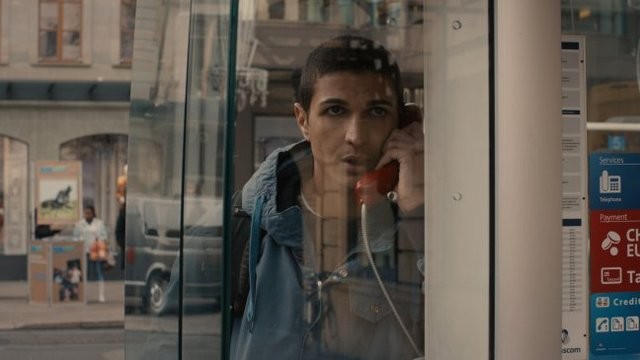
KARIM AID M'HAND IN L'ARMÉE DU SALUT, IMAGE BY AGNČS GODARD
Harsh Bressonian coming-of-age of a gay Moroccan
Young Moroccan filmmaker Abdellah Taďa's semi-autobiographical, fragmentary gay coming-of-age story (based on his own 2006 novel), handsomely shot in blues and grays by Claire Denis's cinematographer Agnčs Godard, is very, very austere, a young life seen in stony cold brutal terms. No horrific ordeals here, though. Just discipline, denial, humility, patience. This has some of the harsh qualities (with a nod or two at witchcraft) of the stories of Paul Bowles or his protegé Mohammed Mrabet. But this isn't storytelling. It's the schematic unfolding of a life in a few impressively drab scenes, ending in the longed-for achievement of every young, poor Moroccan male: escape to the most first-world of havens, Switzerland. The harsh Bressonian style is so unyielding the story's beauty comes through only when one thinks back on it.
As a teenager, Abdellah (Saďd Mrni), hard-faced, not handsome or pretty, lives in a large very poor family mostly of women in his father's traditional Casablanca house. There is his small brother, his big brother, and his father, who beats their mother, in a scene where the other males, with all the other females hovering by, break into the room where the beating is going on, and the mother comes out, seemingly unscathed despite many screams.
In warm weather Abdellah slips away to town to fetch bread where men pull him off for sex in the street; his father seems to recognize and condone this. It's a first escape for the very poor. Once, when a younger, good-looking man caresses Abdellah, he allows himself a smile. Abdellah seems to worship and eroticize his older brother Slimane (Amine Ennaji), whom his mother is afraid of losing, and when Slimane takes him and his younger brother to the seaside he abandons them and runs off with a waitress. Abdellah calls his mother and reports: her amulet didn't work, she needs to cast another spell. But Slimane has urged Abdellah to improve his French, essential for his escape.
Fast forward ten years: 25-year-old Abdellah (Karim Ait M’hand, with prettier eyes, but still the short street-boy hair) now has a Swiss seaside lover (Frédéric Landenberg). They're taken in a rowboat, and the oarsman sniggers knowingly in Moroccan Arabic to Abdellah about his good luck. Abdellah seems, as before, unenthusiastic about his older lover, a professor in Geneva. When Abdellah himself comes to Geneva, it's confusing. It appears he's there for graduate work, but he's arrived a month before his scholarship is to begin. It seems to have been all arranged with help from his professor, but he goes to see the man and says he is through with him. They have words, "You're a whore," the professor tells him. "Yes, I'm a whore," Abdellah answers.
Abdellah has come to the promised land, and he has a visa and scholarship, but he still seems like a refugee. He stashes his suitcase in a locker, washes in a public restroom, sleeps on a bench, and winds up at L'armée du salut (the Salvation Army), where he's in a tiny room with another Moroccan, from Maknes, Mustapha (Hamza Slaoui), who sings him a song by Abdel Halim Hafiz, the Egyptian matinee idol of the Sixties, which he and his siblings loved when he was a youth. It's a plangent memory, a melancholy nostalgia without regret, and there the film ends. It seems a little abrupt, but feeling a film is too short is an unusual and sweet pleasure.
Salvation Army/L'Armée du salut, 81 mins., debuted at Venice Sept 2013 and played at other festivals, including Toronto. It opens in France 7 May 2014. Screened for this review as part of the FSLC-MoMA New Directors/New Films series. Opens in New York on January 23, 2015 at the Film Society of Lincoln Center.
Last edited by Chris Knipp; 01-01-2015 at 05:35 PM.
 Posting Permissions
Posting Permissions
- You may not post new threads
- You may not post replies
- You may not post attachments
- You may not edit your posts
-
Forum Rules





 Reply With Quote
Reply With Quote















Bookmarks